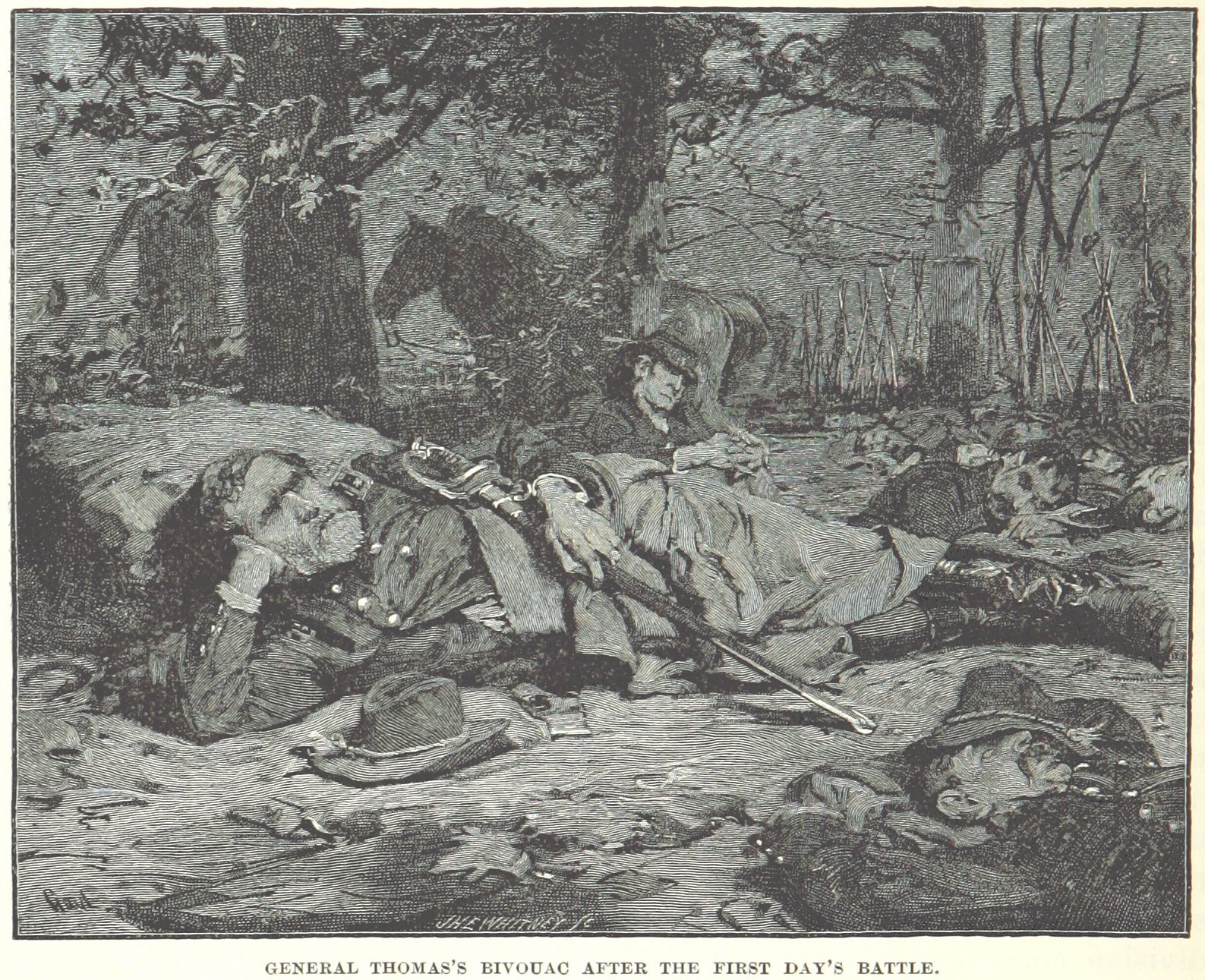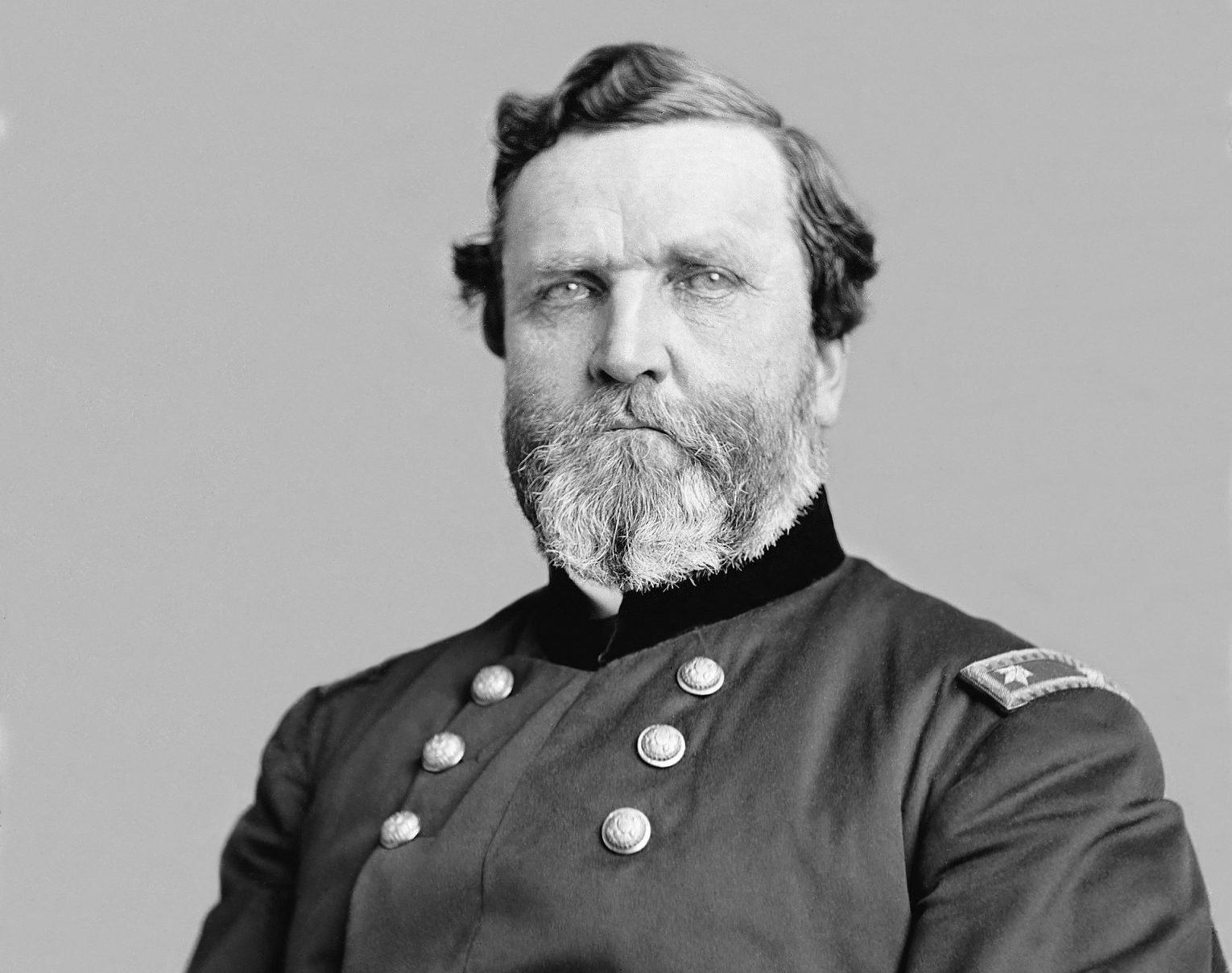‘The Rock of Chickamauga’ — The Only Union General Who Never Lost a Battle

This painting depicts the Battle of Chickamauga fought between August and September 1863. Wikimedia Commons photo.
There’s ongoing debate among historians and military history buffs about which general was better, Grant or Lee? Or maybe the question should be Sherman or Jackson? The name you never hear in these debates is George H. Thomas, who is arguably better than all of them, because he would not publicize himself or allow history to give him the credit he richly deserves.
Thomas cut his teeth in the Mexican War under General Zachary Taylor. There, he learned the harsh lessons that come with poor planning and poor logistics. He also learned to trust the fundamentals of fielding an Army and keeping it secure — a lesson that would later earn him the nickname “The Soldier’s Soldier” from enlisted Union Men.
But when Civil War came, Gen. Thomas was not well-trusted by President Lincoln, seeing as Thomas was born a Virginian — and your home state really meant something at the time. Thomas remained a loyal Union man because his wife was born in the North and, considering his skill as a leader, we should be glad he was. Still, his family turned their backs on him, President Lincoln never accepted him, and other officers never trusted him, but that didn’t matter. He did whatever was asked of him with whatever tools his superiors gave him without complaint.

The main tool they gave him was the battered, bloodied, and often undisciplined rabble from Tennessee, Kentucky, and Ohio, many of whom were basically thrown into the meat grinder at Shiloh by General Ulysses S. Grant (whose mismanagement of the battle nearly lost it for the Union). Conversely, Thomas, known by his fellow officers at the beginning of the war as “Slow Trot,” emphasized planning, preparation, and attention to detail — and how it made a difference when the bullets started to fly.
Thomas did not get an easy start in the Civil War, however. His first opponent was General Thomas “Stonewall” Jackson’s cavalry shortly before the Battle of Bull Run. Though first Bull Run pitted even numbers of Northern troops against Southern, the North performed terribly. They broke and ran in a disastrous rout — all except Thomas’ cavalry. Thomas earned a promotion to brigadier for manhandling Jackson’s cavalry.
His next opponent was Albert Sidney Johnston, the Texan whom Confederate President Jefferson Davis considered the best officer before Robert E. Lee’s rise. The North needed a win — any win — to boost morale. Thomas gave it to them, plowing the Confederates at Mill Springs and pushing them into the Cumberland River. In doing so, he completely smashed Johnston’s hold on Kentucky.
By 1863, Thomas was moving into Tennessee as second to Gen. William Rosecrans, pushing Confederate General Braxton Bragg out of Chattanooga. Believing Bragg was in full retreat, Rosecrans marched the Army of the Cumberland into a trap. Bragg hit Rosecrans at a place called Chickamauga Creek — “the River of Death” according to the the Cherokee.

As James Longstreet committed his men, veterans returning from the fighting at Gettysburg, to the battle, the Union right flank began to fold. Rosecrans began riding for Chattanooga, some of his officers in tow — but Thomas wasn’t going anywhere. As fleeing men came into his sphere, he reorganized them along a ridge and implored them to hold the line at any cost. With the support and guidance of General Thomas, or “Old Reliable,” as he was called by his men, they held off the Confederates long enough to save the Army of the Cumberland, along with the Union hold on Tennessee.
Rosecrans lost his job, but Thomas, who earned the nickname “The Rock of Chickamauga,” inherited the Army.
Grant wrote off Thomas’ army as used-up during the Battle for Chattanooga. Thomas and the Army of the Cumberland were to hold until all the attacking armies in position to advance on Chattanooga. But when Grant’s plan fell apart, the Rock of Chickamauga had to move his army to support General Sherman’s troops, who were struggling. Not only did Thomas’ men relieve Sherman’s troops, they forced the Confederate Army from the field.
Despite his higher rank and superior ability, Grant instead chose William T. Sherman to lead the march on Atlanta. Still, Thomas commanded most of Sherman’s infantry and protected the column as it moved south into Georgia. After they took the city, Confederate General John B. Hood moved North, deftly avoiding the Union Army and moving into Nashville. Sherman reduced the Army of the Cumberland and ordered Thomas to take the remaining troops north in pursuit.
He destroyed Hood’s entire army, earning the nickname the “Hammer of Nashville.”
After the war, Thomas stayed in the military for the rest of his days. He was never celebrated like his contemporaries and he never bothered to publish memoirs of his time in combat. He even deliberately burned his notes to keep someone else from doing it in his stead. Grant, Sherman, and Sheridan would sometimes give him credit, but always with the caveat that he was slow.
“Time and history will do me justice,” Thomas said before his death in 1870.
This article was originally published on We Are The Mighty. Follow @WeAreTheMighty on Twitter.
Read Next: The ‘Gray Ghost’ Who Created Mosby’s Rangers During the American Civil War

Coffee or Die is Black Rifle Coffee Company’s online lifestyle magazine. Launched in June 2018, the magazine covers a variety of topics that generally focus on the people, places, or things that are interesting, entertaining, or informative to America’s coffee drinkers — often going to dangerous or austere locations to report those stories.
BRCC and Bad Moon Print Press team up for an exclusive, limited-edition T-shirt design!
BRCC partners with Team Room Design for an exclusive T-shirt release!
Thirty Seconds Out has partnered with BRCC for an exclusive shirt design invoking the God of Winter.
Lucas O'Hara of Grizzly Forge has teamed up with BRCC for a badass, exclusive Shirt Club T-shirt design featuring his most popular knife and tiomahawk.
Coffee or Die sits down with one of the graphic designers behind Black Rifle Coffee's signature look and vibe.
Biden will award the Medal of Honor to a Vietnam War Army helicopter pilot who risked his life to save a reconnaissance team from almost certain death.
Ever wonder how much Jack Mandaville would f*ck sh*t up if he went back in time? The American Revolution didn't even see him coming.
A nearly 200-year-old West Point time capsule that at first appeared to yield little more than dust contains hidden treasure, the US Military Academy said.












